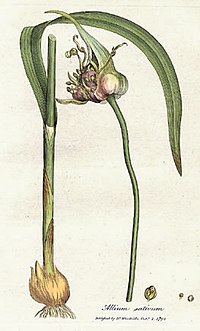
Photo from wikipedia
In the latest APG IV classification system, Amaryllidaceae is placed under the order of Asparagus and includes three subfamilies: Agapanthoideae, Allioideae, and Amaryllidoideae, which include many economically important crops. With… Click to show full abstract
In the latest APG IV classification system, Amaryllidaceae is placed under the order of Asparagus and includes three subfamilies: Agapanthoideae, Allioideae, and Amaryllidoideae, which include many economically important crops. With the development of molecular phylogeny, research on the phylogenetic relationship of Amaryllidaceae has become more convenient. However, the current comparative analysis of Amaryllidaceae at the whole chloroplast genome level is still lacking. In this study, we sequenced 18 Allioideae plastomes and combined them with publicly available data (a total of 41 plastomes), including 21 Allioideae species, 1 Agapanthoideae species, 14 Amaryllidoideae species, and 5 Asparagaceae species. Comparative analyses were performed including basic characteristics of genome structure, codon usage, repeat elements, IR boundary, and genome divergence. Phylogenetic relationships were detected using single-copy genes (SCGs) and ribosomal internal transcribed spacer sequences (ITS), and the branch-site model was also employed to conduct the positive selection analysis. The results indicated that all Amaryllidaceae species showed a highly conserved typical tetrad structure. The GC content and five codon usage indexes in Allioideae species were lower than those in the other two subfamilies. Comparison analysis of Bayesian and ML phylogeny based on SCGs strongly supports the monophyly of three subfamilies and the sisterhood among them. Besides, positively selected genes (PSGs) were detected in each of the three subfamilies. Almost all genes with significant posterior probabilities for codon sites were associated with self-replication and photosynthesis. Our study investigated the three subfamilies of Amaryllidaceae at the whole chloroplast genome level and suggested the key role of selective pressure in the adaptation and evolution of Amaryllidaceae.
Journal Title: BioMed Research International
Year Published: 2022
Link to full text (if available)
Share on Social Media: Sign Up to like & get
recommendations!